- Home
- William Shakespeare
Pericles Page 2
Pericles Read online
Page 2
struggle[s] to accept their difference from and dependence on women, and to take parenthood as the measure of their mortality. Shakespeare resolves this crisis through the father-daughter relationship, using the daughter’s chaste sexuality and capacity to produce heirs as a bridge to the hero’s new identity as father … [Marina’s] purity banishes the shadow of oedipal sexuality, and brings the hero back to his wife and to the world.20
For Janet Adelman, the later acts of the play engage in “working and reworking” the threat posed in the first act:
acts 3 through 5 are structured counter-phobically, as though all sexuality were tantamount to that initial act of incest and all families based in the sexual body were similarly contaminated … In the end Shakespeare will reestablish Pericles’s masculine identity only by first detoxifying the contaminating female body and the family relations based on it, in effect undoing the initial trauma of the play and freeing the family from its sexual origin.21
Kahn and Adelman see the events of Act 5 as both resolution and containment of the threat posed in Act 1; others have been less certain:
Pericles and Marina are safe and the way is clear for rebirth and restoration … And yet there is an unresolved indeterminacy in the text which makes it possible to read the ending of Pericles not as a mandala closure but as a dizzying return to square one.22
In a striking recent reading, Margaret Healy views skeptically Pericles’ decision to marry Marina to the apparently reformed brothel-goer Lysimachus. Describing Pericles as “a satirical play,” she writes,
Through marriage, an innocent young woman will be placed at his disposal by the very person who should most seek to protect her—her father. Marina’s response to the intended match is articulate silence … Pericles is a prince who is seldom in his own state … who flees from danger rather than confronting it; who readily commits his young daughter to the care of rather dubious others; whose wallowing in self-pity comes dangerously close to incurring a charge of effeminacy … and who, through betrothing Marina to a potentially diseased son-in-law, is putting both her health and his future princely heirs’ at stake.23
TIME AND SPACE
Healy’s interest in the specific social, medical, and educational contexts of Pericles is part of a wider challenge to older views of the play as primarily aesthetic or ahistorical. For some critics, the play represents a rejection of topicality which is in itself political. Steven Mullaney argues that Pericles is political in spite of itself, a “radical effort to dissociate the popular stage from its cultural contexts and theatrical grounds of possibility—an effort to imagine, in fact, that popular drama could be a purely aesthetic phenomenon, free from history and from historical determination.”24 For Amelia Zurcher, the play
rejects entirely the humanist notion of history’s utility for the present, and with it any possibility for a dynamic relation between present and past … History is valuable in Pericles because it offers a vision of time when we too will be past interest, past all temptation to betray our integrity by extending and propagating ourselves through time, and instead fixed and hypostatized in a state in which time and integrity no longer need be at odds.25
Other scholars have instead argued, like Healy, that Shakespeare and Wilkins’ play does engage with contemporary debates. Constance C. Relihan suggests that Pericles’ eastern Mediterranean locations
amplif[y] the political implications of his text … Instead of sensing a merciful conclusion that unites the action of the play, the political ambiguities with which the play ends confound such a perception: the rulers who have been least willing to govern, Pericles and Thaisa, will control the best of the play’s societies; Marina, an inexperienced ruler, and Lysimachus, a reformed “john” who encouraged moral profligacy in Mytilene, will rule Tyre, a country they have never seen; Tharsus and Antioch’s governments are left undefined; Mytilene—the land of Pander, Boult, and Bawd—will be left without a ruler; and Ephesus will, apparently, continue to encourage the magic of Cerimon and the isolation possible within Diana’s temple. That all of these locations are part of an ambiguously imagined Asia Minor which resonates with Turkish and “reprobate” cultures as well as with Christian and classical traditions makes the political resolution of Pericles less reassuring and idyllic than much criticism of the play suggests.26
Stuart M. Kurland looks closer to home. Pericles’ “obliviousness” and “remoteness and general passivity” are contrasted with the “energetic conduct of the daughter who will inherit his authority,” and he argues that
These political aspects of Pericles … are best appreciated in the context of early Jacobean politics, notably the problems associated with King James I’s disinclination to stay in London to dispatch government business—that is, to govern and to be seen as governing.27
We must always be wary of attempts to map Shakespeare’s life onto his work. He was the least autobiographical of great writers. But even he must sometimes have drawn upon his own experience. Consider his stage doctors. In his earlier works there are just two of them, both comical—Pinch in The Comedy of Errors and Caius in The Merry Wives of Windsor—whereas in the plays written after the arrival in Stratford-upon-Avon around the year 1600 of Dr. John Hall, Shakespeare’s future son-in-law, there are several dignified and sympathetically portrayed medical men: the physician who has to deal with that difficult patient Lady Macbeth, the doctor who revives the exhausted King Lear in the Quarto version of that play, Dr. Cornelius in Cymbeline (who tricks the wicked stepmother, giving her a sleeping draught rather than the poison she desires). And, most suggestively, there is Cerimon in Pericles, a play about father and daughter, death and rebirth—a play written in the wake of the death of Shakespeare’s brother Edmund and the marriage of his daughter Susanna to Dr. Hall.
Pericles was probably completed during the final months of Susanna’s pregnancy or the early weeks of the life of Shakespeare’s first grandchild, Elizabeth. At the point where Shakespeare took over the writing from George Wilkins, there is a dumb show in which Thaisa is shown pregnant. A baby girl is then born in a storm. The mother dies in childbirth, only to be revived in the following scene by the medical arts of the Lord Cerimon. He voices a doctor’s credo:
I hold it ever
Virtue and cunning were endowments greater
Than nobleness and riches. Careless heirs
May the two latter darken and expend,
But immortality attends the former,
Making a man a god. ’Tis known, I ever
Have studied physic, through which secret art,
By turning o’er authorities, I have,
Together with my practice, made familiar
To me and to my aid the blest infusions
That dwells in vegetives, in metals, stones,
And I can speak of the disturbances
That nature works and of her cures, which doth give me
A more content in course of true delight
Than to be thirsty after tottering honour,
Or tie my pleasure up in silken bags
To please the fool and death.
Given that John Hall had a formidable library of medical “authorities” as well as a thriving practice and an encyclopedic knowledge of herbal cures (“the blest infusions / That dwells in vegetives”), it seems at the very least felicitous that Shakespeare wrote these lines in this context at this time in his life.
This is not to say that Cerimon is Hall, that the pregnancy of Thaisa is that of Susanna, or that Marina is Elizabeth Shakespeare. But family circumstances, and in particular the stabilizing figure of Hall, could not have been far from Shakespeare’s mind. At a deeper level, beyond the biographical, the speech establishes an opposition between the knowledge of nature on the one hand, and the pursuit of wealth and “tottering honour” on the other. For Shakespeare, London was the place associated with honor, status, wealth, and recognition at court. But it was also the place of plague and m
ass death. And of the commercialization of sex: the link between the theater industry and the sex trade was symbiotic. Not only did prostitutes work the playhouses for trade: George Wilkins, co-writer of Pericles, went on to a second career as proprietor of a string of brothels. Intriguingly, it was Shakespeare rather than Wilkins who wrote the play’s brothel scene, which simultaneously offers a quasi-magical act of grace and a highly realistic glimpse into the language and attitudes of the early modern sex trade.
Stratford-upon-Avon, in contrast to London, was associated with stability, community, garden, field, and health. Whether or not Shakespeare ever did take the mercury-bath cure for syphilis, as his final two sonnets strongly imply, he regularly took the nature cure by returning to his hometown. Like the Lord Cerimon, Master Shakespeare speaks of the disturbances that nature works and of her cures.
ABOUT THE TEXT
Shakespeare endures through history. He illuminates later times as well as his own. He helps us to understand the human condition. But he cannot do this without a good text of the plays. Without editions there would be no Shakespeare. That is why every twenty years or so throughout the last three centuries there has been a major new edition of his complete works. One aspect of editing is the process of keeping the texts up to date—modernizing the spelling, punctuation, and typography (though not, of course, the actual words), providing explanatory notes in the light of changing educational practices (a generation ago, most of Shakespeare’s classical and biblical allusions could be assumed to be generally understood, but now they can’t).
Because Shakespeare did not personally oversee the publication of his plays, with some plays there are major editorial difficulties. Decisions have to be made as to the relative authority of the early printed editions, the pocket format “Quartos” published in Shakespeare’s lifetime and the elaborately produced “First Folio” text of 1623, the original “Complete Works” prepared for the press after his death by Shakespeare’s fellow actors, the people who knew the plays better than anyone else. Pericles was not included in the Folio but appeared in a poor Quarto text in 1609—reprinted again the same year and in 1611, 1619, 1630, and 1635—full of errors and incomprehensible passages, and far more badly printed than anything in the Folio. The fact, however, that the job of printing the First Quarto was divided between two printing shops seems strongly to suggest that the fault lay with the underlying manuscript rather than with the shoddiness of the printers’ work. It is therefore largely assumed that the text of the First Quarto Pericles is a “memorial reconstruction”: a pirated text put together from memory by actors or audience members or other nonauthorial agents. Shakespeare’s collaborator on the play, George Wilkins, wrote a novella entitled The Painful Adventures of Pericles, which some editors have used to flesh out some of the Quarto’s more apparently incomplete passages, a practice not followed here due to the conjectural nature of the enterprise.
The following notes highlight various aspects of the editorial process and indicate conventions used in the text of this edition:
Lists of Parts is editorially supplied. Capitals indicate that part of the name used for speech headings in the script (thus “PERICLES, Prince of Tyre”).
Locations Given that Shakespeare wrote for a bare stage and often an imprecise sense of place, we have relegated locations to the explanatory notes, where they are given at the beginning of each scene where the imaginary location is different from the one before.
Act and Scene Divisions were provided in Folio in a much more thoroughgoing way than in the Quartos. Sometimes, however, they were erroneous or omitted; corrections and additions supplied by editorial tradition are indicated by square brackets. Five-act division is based on a classical model, and act breaks provided the opportunity to replace the candles in the indoor Blackfriars playhouse, which the King’s Men used after 1608, but Shakespeare did not necessarily think in terms of a five-part structure of dramatic composition. The Folio convention is that a scene ends when the stage is empty. Nowadays, partly under the influence of film, we tend to consider a scene to be a dramatic unit that ends with either a change of imaginary location or a significant passage of time within the narrative. Shakespeare’s fluidity of composition accords well with this convention, so in addition to act and scene numbers we provide a running scene count in the right margin at the beginning of each new scene, in the typeface used for editorial directions. Where there is a scene break caused by a momentary bare stage, but the location does not change and extra time does not pass, we use the convention running scene continues. There is inevitably a degree of editorial judgment in making such calls, but the system is very valuable in suggesting the pace of the plays.
Speakers’ Names are often inconsistent in Folio, though are quite consistent in the Quarto text of Pericles. We have regularized speech headings but retained an element of deliberate inconsistency in entry directions, in order to give the flavor of Folio, and, in this case, the Quarto text. Thus SIMONIDES is always so-called in his speech headings but “the King” in his entry directions.
Verse is indicated by lines that do not run to the right margin and by capitalization of each line. The Folio printers sometimes set verse as prose, and vice versa (either out of misunderstanding or for reasons of space). We have silently corrected in such cases, although in some instances there is ambiguity, in which case we have leaned toward the preservation of Folio layout. Folio sometimes uses contraction (“turnd” rather than “turned”) to indicate whether or not the final “-ed” of a past participle is sounded, an area where there is variation for the sake of the five-beat iambic pentameter rhythm. We use the convention of a grave accent to indicate sounding (thus “turnèd” would be two syllables) but would urge actors not to overstress. In cases where one speaker ends with a verse half line and the next begins with the other half of the pentameter, editors since the late eighteenth century have indented the second line. We have abandoned this convention, since Folio does not use it, and neither did actors’ cues in the Shakespearean theater. An exception is made when the second speaker actively interrupts or completes the first speaker’s sentence.
Spelling is modernized, but older forms are very occasionally maintained where necessary for rhythm or aural effect.
Punctuation in Shakespeare’s time was as much rhetorical as grammatical. “Colon” was originally a term for a unit of thought in an argument. The semicolon was a new unit of punctuation (some of the Quartos lack them altogether). We have modernized punctuation throughout but have given more weight to Folio punctuation than many editors, since, though not Shakespearean, it reflects the usage of his period. In particular, we have used the colon far more than many editors: it is exceptionally useful as a way of indicating how many Shakespearean speeches unfold clause by clause in a developing argument that gives the illusion of enacting the process of thinking in the moment. We have also kept in mind the origin of punctuation in classical times as a way of assisting the actor and orator: the comma suggests the briefest of pauses for breath, the colon a middling one, and a full stop or period a longer pause. Semicolons, by contrast, belong to an era of punctuation that was only just coming in during Shakespeare’s time and that is coming to an end now: we have accordingly used them only where they occur in our copy texts (and not always then). Dashes are sometimes used for parenthetical interjections where the Folio has brackets. They are also used for interruptions and changes in train of thought. Where a change of addressee occurs within a speech, we have used a dash preceded by a full stop (or occasionally another form of punctuation). Often the identity of the respective addressees is obvious from the context. When it is not, this has been indicated in a marginal stage direction.
Entrances and Exits are fairly thorough in Folio, which has accordingly been followed as faithfully as possible. Where characters are omitted or corrections are necessary, this is indicated by square brackets (e.g. “[and Attendants]”). Exit is sometimes silently normalized to Exeunt and Manet anglicized to “re
mains.” We trust Folio positioning of entrances and exits to a greater degree than most editors.
Editorial Stage Directions such as stage business, asides, indications of addressee and of characters’ position on the gallery stage are used only sparingly in Folio. Other editions mingle directions of this kind with original Folio and Quarto directions, sometimes marking them by means of square brackets. We have sought to distinguish what could be described as directorial interventions of this kind from Folio-style directions (either original or supplied) by placing in the right margin in a smaller typeface. There is a degree of subjectivity about which directions are of which kind, but the procedure is intended as a reminder to the reader and the actor that Shakespearean stage directions are often dependent upon editorial inference alone and are not set in stone. We also depart from editorial tradition in sometimes admitting uncertainty and thus printing permissive stage directions, such as an Aside? (often a line may be equally effective as an aside or a direct address—it is for each production or reading to make its own decision) or a may exit or a piece of business placed between arrows to indicate that it may occur at various different moments within a scene.
Line Numbers are editorial, for reference and to key the explanatory and textual notes.
Explanatory Notes explain allusions and gloss obsolete and difficult words, confusing phraseology, occasional major textual cruces, and so on. Particular attention is given to nonstandard usage, bawdy innuendo, and technical terms (e.g. legal and military language). Where more than one sense is given, commas indicate shades of related meaning, slashes alternative or double meanings.

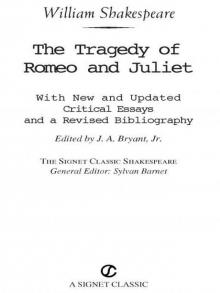 Romeo and Juliet
Romeo and Juliet As You Like It (Folger Shakespeare Library)
As You Like It (Folger Shakespeare Library)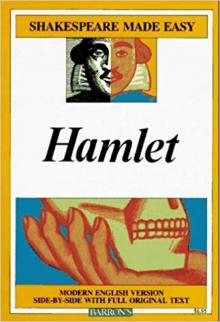 Hamlet
Hamlet Richard II (Folger Shakespeare Library)
Richard II (Folger Shakespeare Library)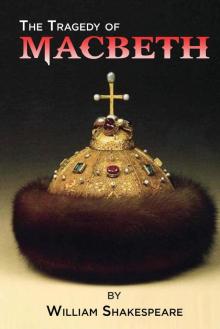 Macbeth
Macbeth Henry V
Henry V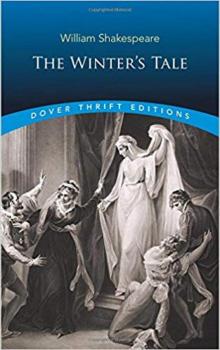 The Winter's Tale
The Winter's Tale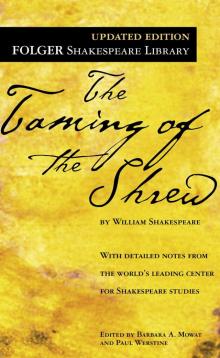 The Taming of the Shrew
The Taming of the Shrew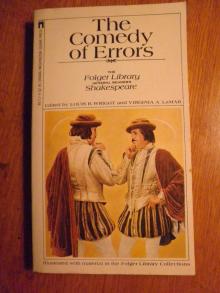 The Comedy of Errors
The Comedy of Errors King Lear (Folger Shakespeare Library)
King Lear (Folger Shakespeare Library)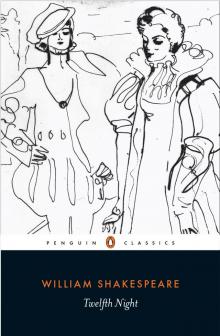 Twelfth Night
Twelfth Night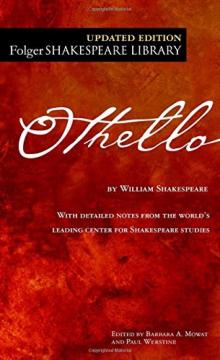 Othello
Othello The Two Gentlemen of Verona
The Two Gentlemen of Verona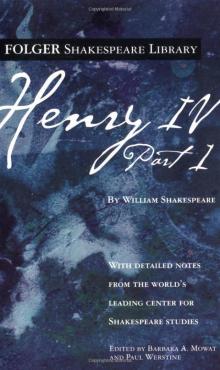 Henry IV, Part 1 (Folger Shakespeare Library)
Henry IV, Part 1 (Folger Shakespeare Library) King John/Henry VIII (Signet Classics)
King John/Henry VIII (Signet Classics)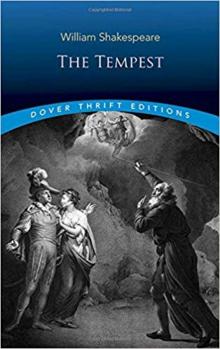 The Tempest
The Tempest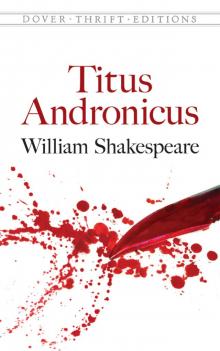 Titus Andronicus (Dover Publications)
Titus Andronicus (Dover Publications)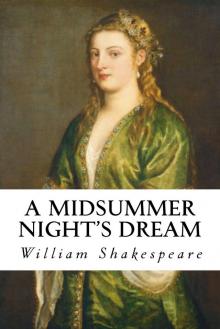 A Midsummer Night's Dream
A Midsummer Night's Dream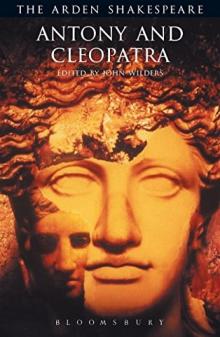 Antony and Cleopatra (Arden Shakespeare: Third Series)
Antony and Cleopatra (Arden Shakespeare: Third Series)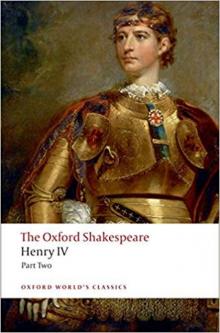 The Oxford Shakespeare: Henry IV, Part 2 (Oxford World's Classics)
The Oxford Shakespeare: Henry IV, Part 2 (Oxford World's Classics)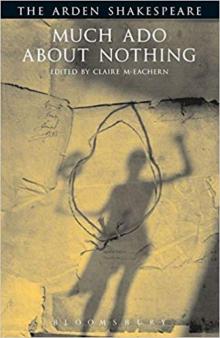 Much Ado About Nothing (Arden Shakespeare: Third Series)
Much Ado About Nothing (Arden Shakespeare: Third Series)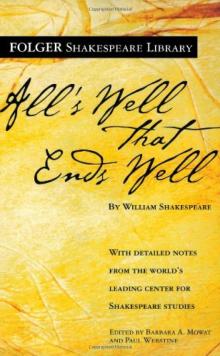 All's Well That Ends Well
All's Well That Ends Well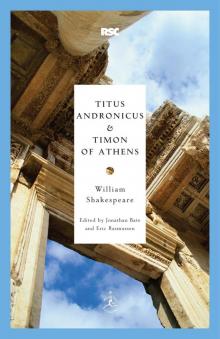 Titus Andronicus & Timon of Athens
Titus Andronicus & Timon of Athens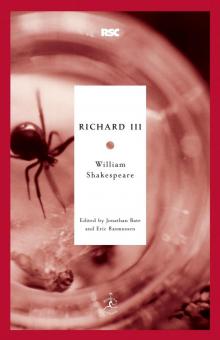 Richard III (Modern Library Classics)
Richard III (Modern Library Classics) Coriolanus
Coriolanus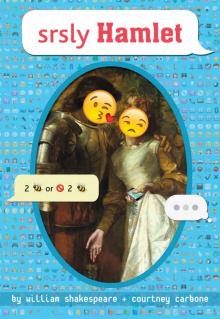 srsly Hamlet (OMG Shakespeare)
srsly Hamlet (OMG Shakespeare) The Merchant of Venice
The Merchant of Venice Richard III
Richard III Richard II
Richard II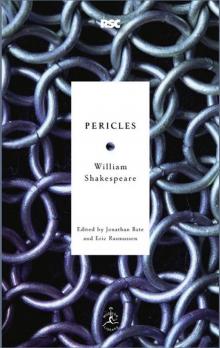 Pericles
Pericles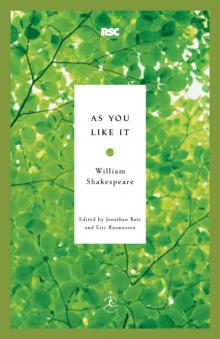 As You Like It
As You Like It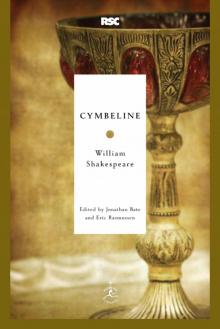 Cymbeline
Cymbeline Alls Wel that ends Well
Alls Wel that ends Well YOLO Juliet
YOLO Juliet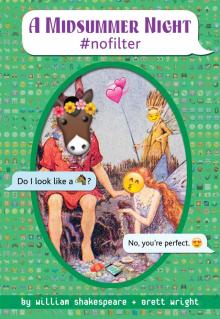 A Midsummer Night #nofilter
A Midsummer Night #nofilter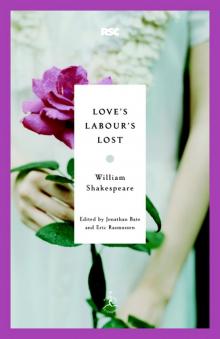 Love's Labour's Lost
Love's Labour's Lost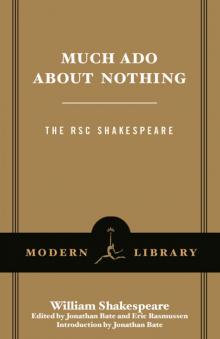 Much Ado About Nothing
Much Ado About Nothing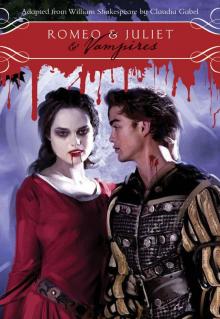 Romeo & Juliet & Vampires
Romeo & Juliet & Vampires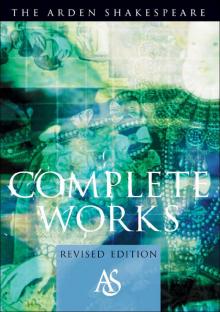 The Arden Shakespeare Complete Works
The Arden Shakespeare Complete Works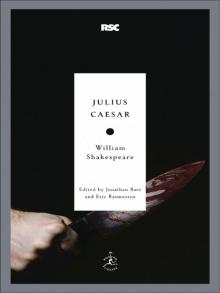 Julius Caesar
Julius Caesar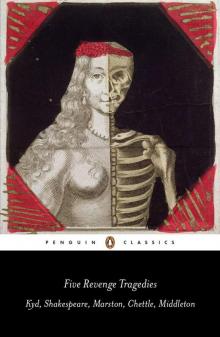 Five Revenge Tragedies: The Spanish Tragedy, Hamlet, Antonio's Revenge, The Tragedy of Hoffman, The Revenger's Tragedy (Penguin Classics)
Five Revenge Tragedies: The Spanish Tragedy, Hamlet, Antonio's Revenge, The Tragedy of Hoffman, The Revenger's Tragedy (Penguin Classics)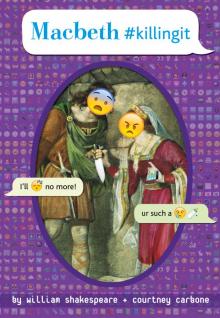 Macbeth #killingit
Macbeth #killingit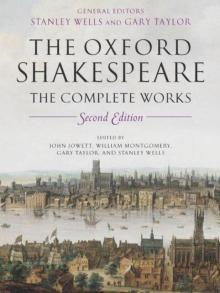 The Oxford Shakespeare: The Complete Works
The Oxford Shakespeare: The Complete Works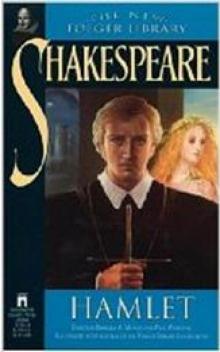 Hamlet, Prince of Denmark (Collins edition)
Hamlet, Prince of Denmark (Collins edition)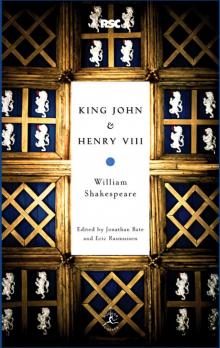 King John & Henry VIII
King John & Henry VIII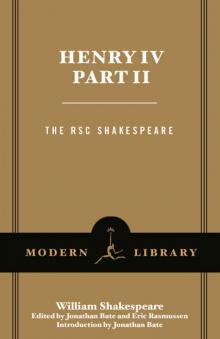 Henry IV, Part 2
Henry IV, Part 2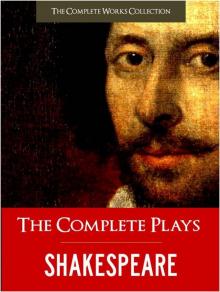 Complete Plays, The
Complete Plays, The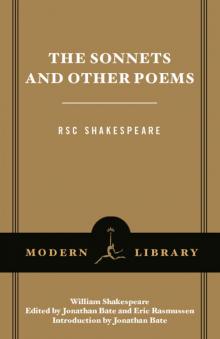 The Sonnets and Other Poems
The Sonnets and Other Poems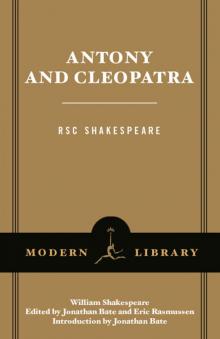 Antony and Cleopatra
Antony and Cleopatra Henry IV, Part 1
Henry IV, Part 1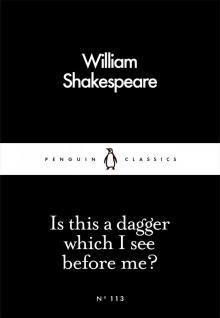 Is This a Dagger Which I See Before Me?
Is This a Dagger Which I See Before Me? The Complete Works of William Shakespeare In Plain and Simple English (Translated)
The Complete Works of William Shakespeare In Plain and Simple English (Translated)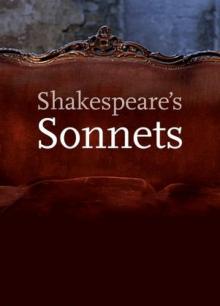 The Sonnets
The Sonnets